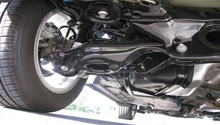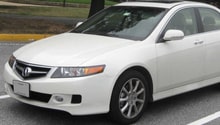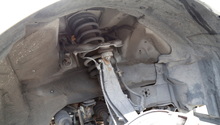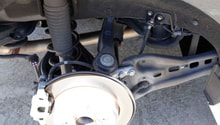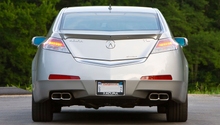Acura TL 2009-2014: Suspension Performance Diagnostic Guide
Hearing an unusual clunk, vibration or noise from either the front, rear or more parts while driving or cornering?
This article applies to the Acura TL (2009-2014).
A vehicle's suspension is responsible for allowing the free movement of the wheels, as well as absorbing impacts and harshness. Your suspension is comprised of several key components, this includes everything from the shock/strut, spring, control arms or A-arms, ball joints, tie rods, stabilizer bars, bushings, etc. Over time, these components do wear out, requiring maintenance and/or replacement. The interior of your vehicle also contains many different plastic panels. If you have an aftermarket sound system installed, the increase in sounds and vibrations can cause some of these panels to rattle more than usual or become loose. Often it could be as simple as low air pressure in one of the tires causing an uneven travel of the suspension as you go over bumps and cracks. The behavior may be related to the vehicle pulling to one side or another indicating an under-inflated tire.

Materials Needed
- Air pressure gauge
- Flashlight
- Brake cleaner product
- Jack
- Jack stands
- Wheel chocks
Step 1 – Check tire pressure
Unusual tire pressures can increase ride harshness or cause wandering.
If the air pressure is too low on one or more tires, the car will handle differently and the car will have less of a "cushion" when transitioning over bumps and cracks.
- Remove valve stem cap.
- Insert air pressure gauge.
- Record reading for first tire.
- Repeat for remaining tires.
- If loss of air is found, fill the offending tire with recommended air pressure.
- Severely under or over-inflated tires are problematic.

Pro Tip
You can typically find the correct air pressure for your tires on the sticker found on the door jamb or in your owner's manual.
Step 2 – Are your tires wearing evenly?
Tires may be wearing unevenly.
If the alignment on your vehicle is out of spec, your vehicle may feel like it's "wandering" at speed, and will have uneven or poor tire wear.
- Raise the front of vehicle on level ground with a jack.
- Chock rear wheels.
- Secure vehicle with jack stands.
- Inspect tire tread to ensure the wear pattern is even and not erratic.
- Lower vehicle and repeat for rear tires.
- If uneven tire wear is found, visit an alignment shop to dial in the correct specifications.

Pro Tip
You can use the "penny" test to ensure that President Lincoln's head is covered part way throughout the tread pattern. If his head is not covered all the way through the pattern, you may have uneven wear. Furthermore, the alignment shop can also ensure the tires are all "road force balanced."
Step 3 – Check suspension bushings
Bushings may be torn or damaged.
It is not uncommon to find a torn rubber bushing as the cause to an unfamiliar sound from a specific part of the vehicle, especially over bumps. Worn or damaged bushings can cause suspension noises such as pops, clunks and bangs to occur.
- Jack the front of the car on level ground using a jack.
- Chock the rear wheels.
- Secure vehicle with jack stands.
- Inspect the bushings specific to the stabilizer bar.
- Inspect the ball joints for torn bushings.
- Inspect the control arm bushings to see if they are torn or damaged.
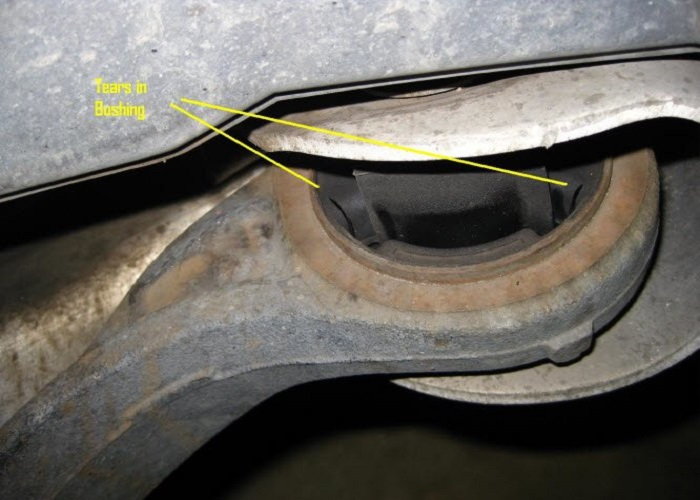
Figure 3. Torn control arm bushing. 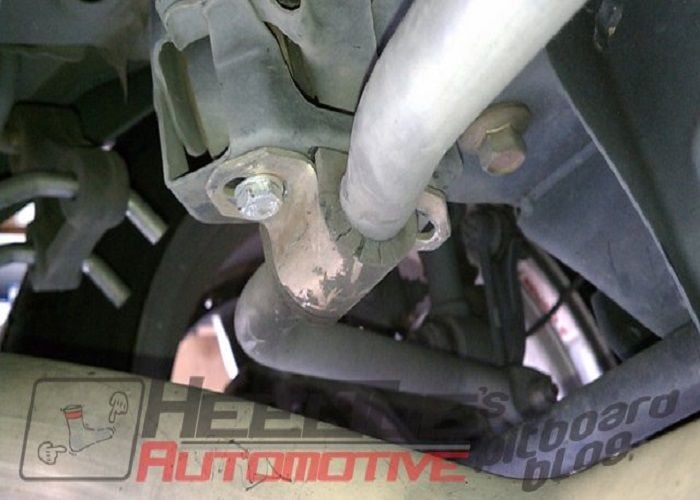
Figure 4. Torn sway bar bushing shown.
Pro Tip
If the underside of your car is very dirty, it might help to use brake clean products to clean some debris and get a better view of the components. However, if it's also very dry under the car, you will be able to spot cracks more easily.
Step 4 – Check for shock absorbers
Shocks tend to be a common source of noise, especially as vehicles age. Inspect your shock absorbers for fluid leaks, which indicate that they are in need of replacement. Always replace shocks in pairs.
Even if you don't suspect a leaky or blown shock, there is another common troublemaker here. The top hat—which is the upper part of the front strut that mates the strut and spring together, as well as bolts up to the strut tower—is prone to making rattling or knocking sounds. That top hat uses a bearing set to help it freely rotate with the coil spring and allows for a bit of flex for road imperfections. The bearing set in the top hat can wear out, causing binding. This issue is especially prevalent when the wheel is turned or you hit a bump, often resulting in a binding, rattling, or "snapping" type sound. The common fix is just to replace the whole top hat assembly. They are usually inexpensive.

Related Discussions
- Cabin Noise at Speed - AcuraZine.com
- Rear Noise Driving Me Crazy - AcuraZine.com
- Drive Shaft Whine - AcuraZine.com
- Common Front Suspension Problems - AcuraZine.com

